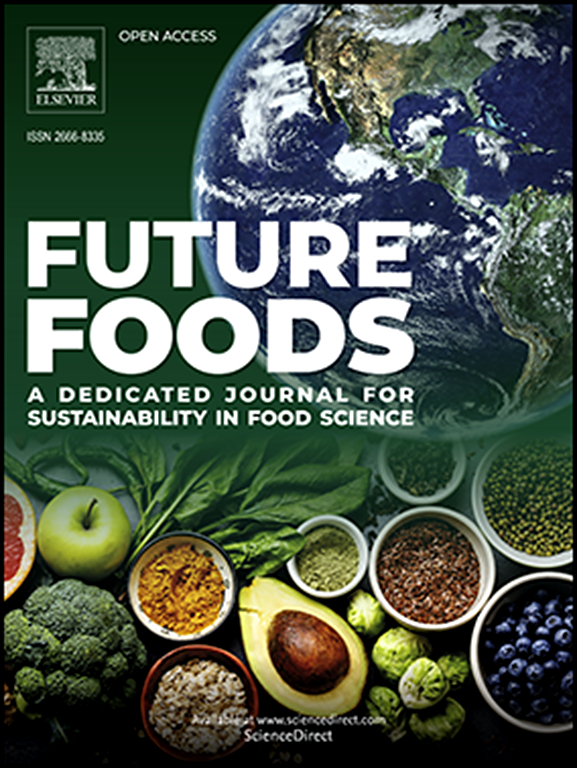Production and characterization of kombucha-like beverage by cocoa (Theobroma cacao) by-product as raw material
IF 7.2
Q1 FOOD SCIENCE & TECHNOLOGY
引用次数: 0
Abstract
Cocoa is one of the most consumed products globally. However, only approximately 20 % of cocoa is utilized, leading to a search for alternatives and ways to utilize the by-products, which represent approximately 80 % of the fruit and have nutritional potential. Therefore, this work aimed to produce and characterize a beverage similar to kombucha using cocoa bean shell (CBS) at different concentrations (0.7 %, 1.5 %, and 2.3 %). The fermented beverage was analyzed for alcohol content, antioxidant activity, structure of symbiotic cultures of bacteria and yeast using scanning electron microscopy (SEM), as well as pH, soluble solids, titratable acidity, color parameters, and total phenolic compounds (TPCs) after 0, 3, 6, 9, and 12 d of storage at 2.7 ± 0.06 °C. The results showed the absence of alcohol content, antioxidant activity in all the analyzed formulations, and dense, interconnected structures in the SEM analysis of symbiotic cultures developed during fermentation. Variations were identified in the analyzed parameters, namely pH (from 3.58 ± 0.01 to 3.61 ± 0.02), soluble solids (ºBrix) (from 7.03 ± 0.06 to 7.13 ± 0.06), and titratable acidity (g of acetic acid/100 ml) (from 0.29 ± 0.00 to 0.31 ± 0.01). Interestingly, concerning color parameter, a significant influence of CBS content on luminosity parameter was evidenced (ranging from 90.25 ± 0.01 to 92.45 ± 0.06) and on reddish hue (with variation from 2.01 ± 0.01 to 1.53 ± 0.07), in addition to variation in TPC content (ranging from 2.33 ± 0.00 to 1.73 ± 0.00). For the sensory profile, the average acceptance rate of the three formulations was 68.6 %, and the average purchase intention ranged 2.98–3.20. High-throughput sequencing revealed that the primary bacterial genera were Komagataeibacter, Acetobacter, and Gluconacetobacter, and the predominant genera of yeasts were Brettanomyces and Pichia. In conclusion, CBS has significant potential for the development of innovative food products.
求助全文
约1分钟内获得全文
求助全文
来源期刊

Future Foods
Agricultural and Biological Sciences-Food Science
CiteScore
8.60
自引率
0.00%
发文量
97
审稿时长
15 weeks
期刊介绍:
Future Foods is a specialized journal that is dedicated to tackling the challenges posed by climate change and the need for sustainability in the realm of food production. The journal recognizes the imperative to transform current food manufacturing and consumption practices to meet the dietary needs of a burgeoning global population while simultaneously curbing environmental degradation.
The mission of Future Foods is to disseminate research that aligns with the goal of fostering the development of innovative technologies and alternative food sources to establish more sustainable food systems. The journal is committed to publishing high-quality, peer-reviewed articles that contribute to the advancement of sustainable food practices.
Abstracting and indexing:
Scopus
Directory of Open Access Journals (DOAJ)
Emerging Sources Citation Index (ESCI)
SCImago Journal Rank (SJR)
SNIP
 求助内容:
求助内容: 应助结果提醒方式:
应助结果提醒方式:


